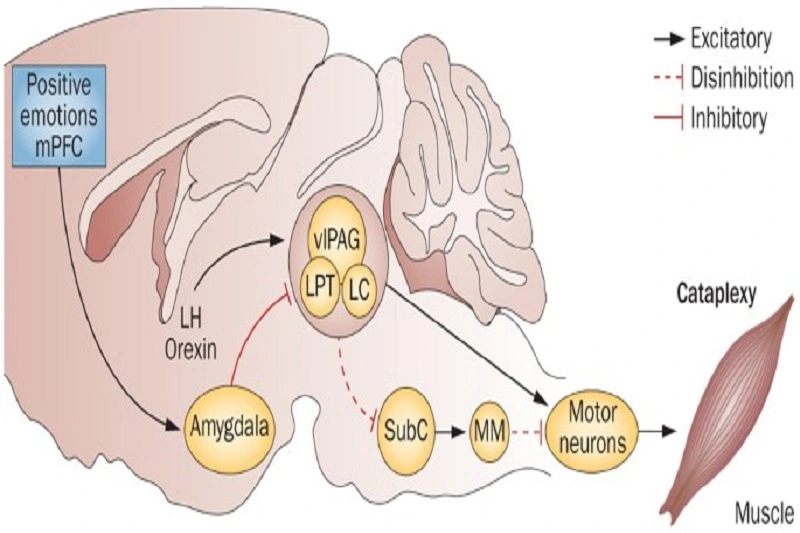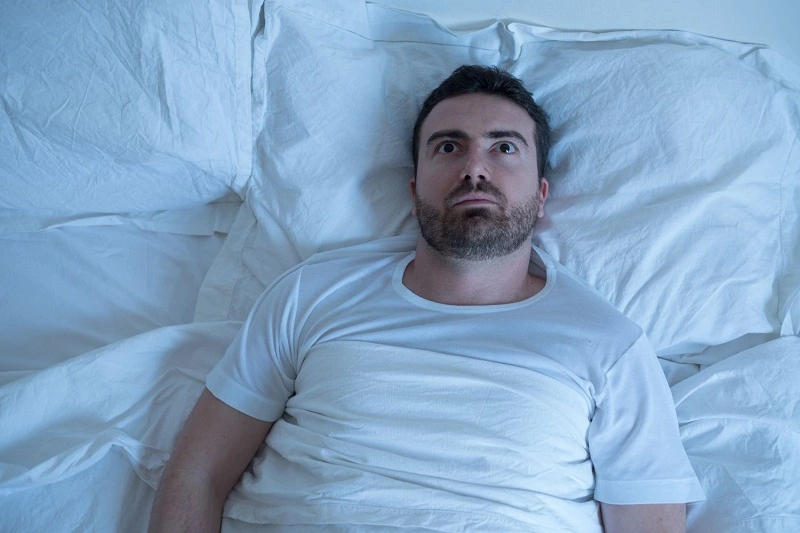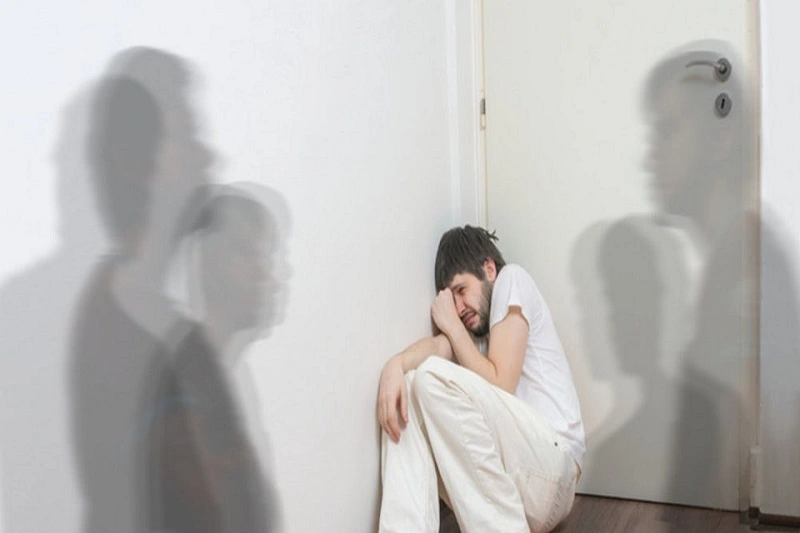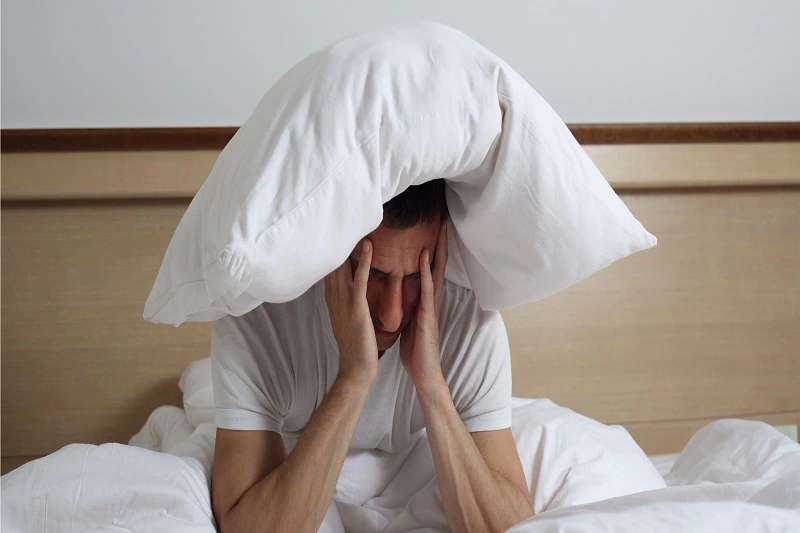Sorry, nothing in cart.
Narcolepsy Symptoms, Causes, Diagnosis and Treatment
- By admin
- |
- General Blog
- |
What Is Narcolepsy?
Narcolepsy is a neurological condition that impairs a person’s ability to wake up and sleep. It causes excessive daytime sleepiness. They may also fall asleep abruptly at any time and throughout any activity.
We enter the early phases of sleep, then the deeper stages, and lastly (after about 90 minutes) rapid eye movement (REM) sleep in a typical sleep cycle. Narcolepsy patients enter REM sleep almost immediately in the sleep cycle and sometimes when awake.
Type 1 narcolepsy is characterized by an abrupt loss of muscular tone, resulting in weakness and inability to control your muscles (cataplexy). Cataplexy is not a symptom of type 2 narcolepsy.
This sleep disorder is caused by disturbances in the timing and control of rapid eye movement (REM) sleep. Many symptoms are similar to what occurs during REM sleep. Narcolepsy’s muscle weakness, sleep paralysis, and hallucinations are similar to REM sleep’s loss of muscle tone, paralysis, and imaginative dreaming.
Like narcolepsy, idiopathic hypersomnia causes excessive daytime sleepiness. People with this problem typically have difficulty waking up, and when they do, they feel sluggish, mentally blurred, and unable to move (a condition known as sleep inertia). Polysomnography and a multiple sleep latency test are required to find out if excessive daytime drowsiness is caused by narcolepsy or idiopathic hypersomnia.
Symptoms and Causes of Narcolepsy
- Severe excessive daytime sleepiness
- Cataplexy
- Sleep paralysis
- Hallucinations while falling asleep and waking up
- Disturbances in nighttime sleep
Excessive Daytime Sleepiness

Narcolepsy causes extreme daytime sleepiness, even after a long period of excessive sleep. Many people become overcome by uncontrollable phases of sleep that can occur at any time, frequently without notice (known as sleep attacks). Only temporarily can one fight falling asleep.
People might have many or few episodes in one working day. Each often lasts a few minutes to a few hours. People can be woken up just as easily as they can from normal sleeping. Even if the sleep episode is only a few minutes long, those usually feel energized when they wake up. They may, however, fall asleep again in a few minutes.
Falling asleep episodes are most likely to occur in monotonous situations, such as tedious meetings or extended periods of highway driving, although they can also occur when eating, conversing, or writing.
Cataplexy

A quick, temporary episode of weakness in muscles without loss of consciousness, known as cataplexy, may be triggered by a sudden emotional reaction such as anger, fear, thrills, laughter, or surprise while people are awake all over the day. People may go slack, drop something they are holding, or collapse on the ground. The jaw might droop, facial muscles might spasm, eyes might close, and the head should nod. Vision may be hazy. People’s speech may slur.
These episodes seem like regular REM sleep muscle paralysis and, to a lesser extent, a feeling of being “weak with laughter.”
Cataplexy affects around one-fifth of patients with narcolepsy.
Sleep Paralysis

People occasionally try to move but are unable to do so as they are falling asleep or immediately after awakening. This condition, known as sleep paralysis, can be alarming. The touch of another person may provide relief from paralysis. Otherwise, the paralysis will go away on its own within a few minutes.
One-fourth of patients with narcolepsy have sleep paralysis. It can happen to healthy children and, less frequently, healthy adults.
Hallucinations

People may clearly see sights or hear sounds that are not there when they are going asleep or, less frequently, when they awaken. These incredibly vivid hallucinations are similar to but stronger than normal dreaming.
Hallucinations are called:
- Occur while sleeping, they are considered to be hypnagogic.
- Occur during awakening, they are known as hypnopompic.
One-third of persons with narcolepsy experience hypnagogic hallucinations. They are prevalent in healthy youngsters and, on certain days, in healthy adults.
Disturbances in Nighttime Sleep

Nighttime sleep in patients with narcolepsy may be disrupted by awakenings and vivid, frightening dreams. As an outcome, sleep is unrefreshing, and people can sleep even more during the day.
Complications
Narcolepsy patients frequently struggle to perform and concentrate. They are more sensitive to damage themselves, such as if they fall asleep behind the wheel. Narcolepsy can be stressful. Productivity and motivation may suffer, as well as concentration. People may withdraw from others, causing personal connections to suffer. Many people feel depressed.
Narcolepsy Causes
Experts remain unclear as to what causes narcolepsy. They believe it is the result of several factors interacting to cause difficulties in your brain and disrupt your REM sleep.
Scientists are getting closer to identifying genes associated with the illness. These genes regulate the generation of chemicals in your brain that may indicate sleep and waking cycles.
Some experts believe narcolepsy occurs because your brain has difficulty producing a substance called hypocretin. They’ve also discovered issues in regions of the brain that control REM sleep.
One of the risk factors for narcolepsy is age. Narcolepsy typically appears between the ages of 15 and 25, however, it can appear at any age. If you have a family history of narcolepsy, your chances of developing it are 20 to 40 times larger.
Narcolepsy-Related Conditions and Behaviors
Some patients with narcolepsy also have the following problems:
- Periodic limb movement disorder (PLMD) occurs when your leg muscles move repeatedly during the night without your control.
- Sleep apnea occurs when your breathing regularly stops and resumes while you sleep.
- Automatic behavior: You fall asleep while doing anything routine, such as driving, walking, or talking. You continue the activity while sleeping and awaken with no recollection of what you finished.
Narcolepsy Diagnosis
Narcolepsy symptoms may appear like those of other medical conditions. Your diagnosis could include:
Medical history and physical examination
Sleep history: For a number of weeks, your doctor may urge you to keep track of your symptoms and when you sleep.
Polysomnogram (PSG): This is a sleep disorder clinic or a sleep lab test. It is an overnight test that records issues in your sleep cycle by taking continual measures while you sleep. A PSG can help you determine whether you enter REM sleep at random moments during your sleep cycle. It can rule out other potential causes of your symptoms.
Multiple Sleep Latency Test (MSLT): This is also performed in a specialized clinic or laboratory. The test is conducted during the day to assess your proclivity to fall asleep and to determine whether certain features of REM sleep occur at unexpected times during the day. You’ll take four or five quick naps every two hours.
Treatment
Narcolepsy has no cure method. However, kept treatment results in normal lifestyles for many people.
People should also aim to obtain sufficient sleep at night and take short (less than 30 minutes) naps at the same time every day (usually in the afternoon). If the symptoms are minor, these remedies may be sufficient. Cataplexy sufferers should avoid anything that causes cataplexy, such as laughter, rage, and fear.
Medication for Narcolepsy Treatment:
Cognitive enhancer medications, such as Modafinil and Armodafinil, are used to help alleviate feeling sleepy. During drug treatment, people are continuously monitored by doctors.
Modafinil Tablets include:
Armodafinil Tablets:
Both Armodafinil and Modafinil help people stay awake by interacting with various brain receptors. These medications are taken once a day in the morning or by workers on shifts an hour before they start work. Both medications are the primary treatment for narcolepsy without cataplexy.
All of these medications are generally safe, but they might cause headaches, nausea, vomiting, and a rash. Modafinil should not be used by pregnant women since it might cause severe birth abnormalities, including defects in the heart.
FAQS:
What exactly are narcolepsy behaviors?
Narcolepsy is a neurological sleep disorder that has no recognized cause. The main symptom of narcolepsy is excessive and overwhelming daytime sleepiness, even after getting enough sleep at night: In addition to a thorough medical history and physical examination, many lab tests are used to confirm the diagnosis.
Is narcolepsy curable?
Although there is no cure for narcolepsy, certain symptoms can be alleviated with medications and lifestyle changes. Modafinil is a central nervous system stimulant and modafinil is typically used as the first line of treatment.
Who is affected by narcolepsy?
Narcolepsy is assumed to affect men and women equally, while other research shows the disorder may be more common in men. Symptoms frequently appear during youth, however, it is commonly diagnosed between the ages of 20 and 40.
Is narcolepsy a mental disease?
However, narcolepsy is usually misinterpreted as a psychiatric disorder at first, contributing to the lengthy time to appropriate diagnosis and treatment. It is a severe neurological disorder that increases the likelihood of social and vocational dysfunction.
Is narcolepsy causing brain damage?
A rare form of narcolepsy can occur as a result of a hypothalamic imbalance caused by a brain injury. This is referred to as secondary narcolepsy. Secondary narcolepsy is a serious neurological problem that can include sleep cycle irregularities, memory loss, and mood disturbances.
What is the root cause of narcolepsy?
Many cases of this sleep disorder are thought to be caused by a deficiency of hypocretin (also known as orexin), a brain neurotransmitter that regulates sleep. The deficit is considered to be caused by the immune system mistakenly attacking brain regions that produce hypocretin.
Is an MRI capable of detect narcolepsy?
Imaging investigations, such as MRI, can help rule out rare causes of symptomatic narcolepsy. Idiopathic narcolepsy can be caused by structural abnormalities in the brain stem and diencephalon. In patients with secondary narcolepsy, an MRI of the brain may reveal a variety of abnormalities related to the main cause.
